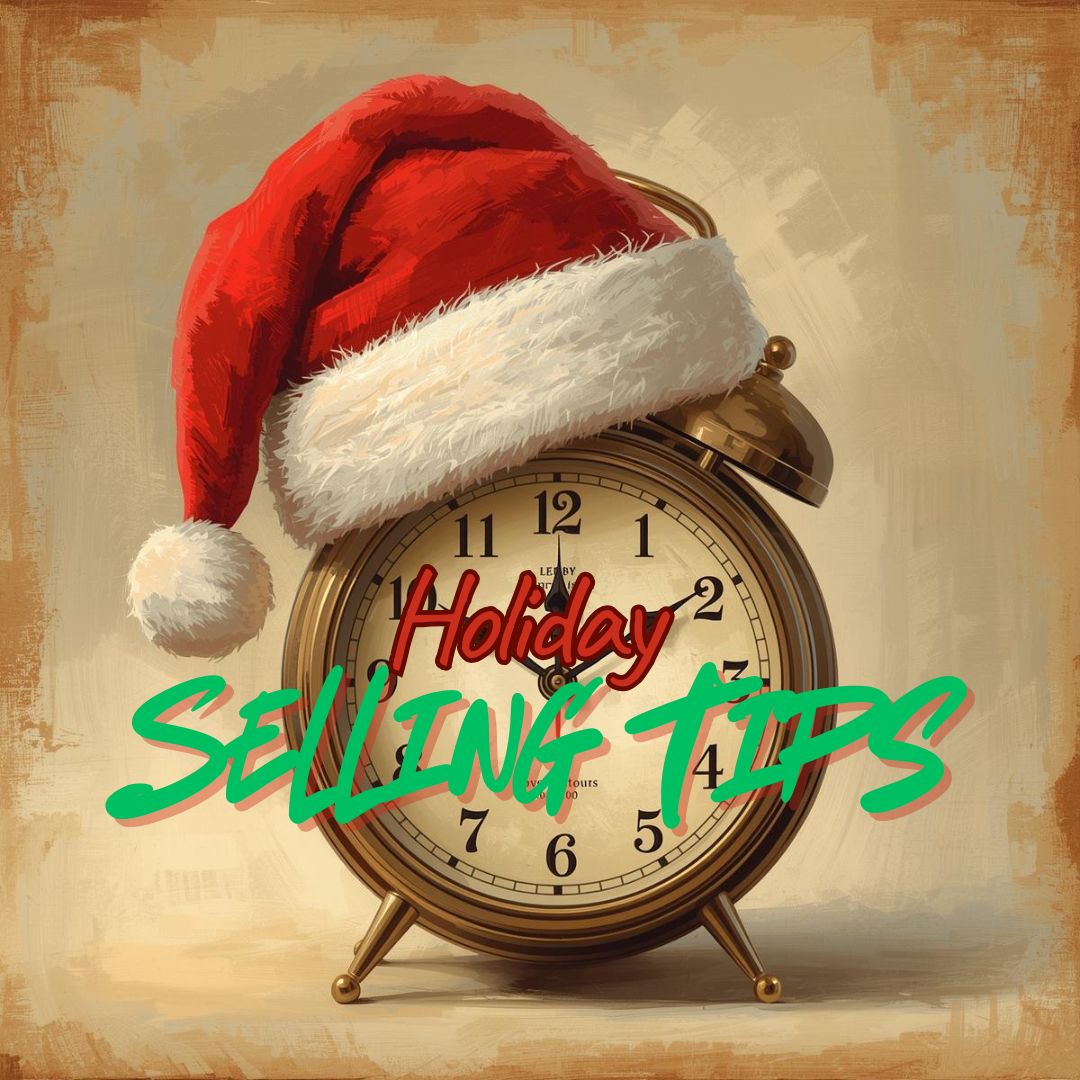Selling without the right tools is like trying to build IKEA furniture without the manual.
Frustrating, time-consuming, and probably ending in disaster. And if you’re in sales, you know the grind—finding leads, making calls, following up, updating CRM records, and trying to close deals, all while keeping your pipeline full. It’s a lot.
That’s where sales tools come in. They help you work smarter, not harder, so you can close deals faster and with less stress.
Sales tools are the essential software and resources that help sales teams work smarter and more efficiently at every stage of the B2B sales process.
And now that we’re seeing new AI sales tools pop up everywhere, salespeople are scrambling to find new sales intelligence software to help them stay in the game.
With so many tools out there, it can be overwhelming to figure out which ones you actually need.
Don't worry—we're breaking it all down for you. Let’s start with the basics.
What the Deal with Sales Tools?
Sales tools are software, apps, or platforms designed to help business sales teams find leads, manage relationships, close deals faster.
Think of them as your digital Swiss Army knife—everything you need to prospect, pitch, and close, all in one place. They can be simple spreadsheets or elaborate applications–but let’s be honest, using spreadsheets can get messy and a time-suck compared to using actual software that’s designed to help you work smarter and faster.
Types of sales tools by business category:
✔️ Lead generation – Finding and verifying potential customers
✔️ CRM (Customer Relationship Management) – Keeping track of prospects and existing clients
✔️ Sales automation – Automating emails, follow-ups, and scheduling
✔️ Sales enablement – Providing content, insights, and data to close deals faster
✔️ Communication & engagement – Making interactions with prospects smoother and more effective (like using Seamless.AI’s Pitch Intelligence feature to deliver the right message to the right person at the right time).
No matter your role—SDR, AE, or sales leader—there’s a sales tool designed to make your workflow more efficient and your results more predictable.
Here’s the thing that most people don’t think about sales tools: Sales tools are not just for salespeople; they're used by managers and executives as well.
Managers need to know what's going on with individual employees in order to make sure everyone is meeting goals at any given point in time and also so that management knows which areas may need improvement based on overall performance throughout the course of a year (or quarter).
Executive leadership will use these same reports as well but should also look at data from other sources such as Google Analytics for insights about how customers feel about returning again after visiting once before because there could be something wrong with either product quality or service delivery
Sales tools are used to measure sales performance, track sales performance and plan your sales strategy. Sales tools can help you identify the best time to make a sale and the best time to follow up on a sale.
📕Related: Which one is better? Seamless.Ai vs Zoominfo
📊Psst… The average SDR spends 6+ hours a week just writing emails. 😱 But some teams have cut that down to 1 hour with AI. What's their secret?
That's exactly what we're trying to find out in the 2025 State of AI in Sales Survey: how sales teams are *actually* using AI. Take it to get your own copy of the report directly to your inbox before your competitors.

Non-Negotiable Sales Tools in 2025
If you’ve ever manually combed through LinkedIn to find prospects, spent hours crafting personalized emails, or struggled to remember when to follow up, you already know how time-consuming sales can be.
And sales isn’t just about charm and closing skills anymore. It’s about efficiency, strategy, and data. That’s where sales tools come in. Instead of wasting valuable time on tasks that can be automated, you can streamline inefficiencies to focus more on building relationships.
With the help of the right sales tools, you can enjoy:
- Time-saving: Automate repetitive tasks like follow-ups, data entry, and lead tracking.
- Better insights: Get real-time data on what’s working and what’s not, so you can adjust your strategy.
- Improved relationships: Track every interaction with a prospect to personalize your outreach.
Now that you know why they matter, let’s talk about the different types of sales tools out there.
Types of Sales Tools (AKA Your Sales Arsenal)When people search for "sales tools," they usually want to know which tools will help them sell smarter, not harder.
Here are the major sales tool categories:
1. Lead Generation Tools
This is where it all begins. You can’t close deals without leads, right?
Lead generation tools help you find potential customers, verify their contact information, and prioritize the best opportunities.
Top Lead Generation Tools:
✅ Seamless.AI – Uses AI to find verified contact details in real-time and build targeted prospect lists.
✅ LinkedIn Sales Navigator – Helps sales pros find and connect with the right decision-makers.
✅ ZoomInfo – A robust database for gathering company and contact details.
How they help: Instead of manually searching for leads, these tools deliver verified, ready-to-contact prospects, saving you hours of research.
📘Related: Seamless.AI vs Apollo Comparison
2. CRM (Customer Relationship Management) Tools
Once you have leads, you need to keep track of them. CRM tools keep all your customer interactions in one place, ensuring no lead falls through the cracks.
Top CRM Tools:
✅ Salesforce – The industry standard for tracking leads, managing deals, and forecasting revenue.
✅ HubSpot CRM – A user-friendly, free CRM for small to mid-sized teams.
✅ Pipedrive – A simple, visual CRM designed for deal tracking.
How they help: CRMs keep your sales process organized, remind you to follow up, and give you a 360-degree view of your pipeline—so you can spend less time managing data and more time closing deals.
Think of a CRM as your sales command center. It helps you stay organized, follow up at the right time, and never miss a deal.
3. Sales Engagement & Automation Tools (More sales with less effort)
Following up is crucial, but manually sending emails, scheduling meetings, and tracking responses? That’s a productivity killer. Sales engagement tools automate these tasks, allowing you to reach more prospects without the extra workload.
Top Sales Engagement Tools:
✅ Outreach – Automates email sequences, calls, and follow-ups.
✅ Salesloft – Helps sales teams personalize outreach and improve engagement.
✅ Calendly – Simplifies meeting scheduling without the back-and-forth emails.
How they help: These tools ensure you never forget a follow-up and allow you to personalize outreach at scale, making your sales process both efficient and effective.
4. Sales Analytics & Reporting Tools
If you can't measure it, you can't improve it. And we all know that data is king. Sales intelligence tools analyze customer behavior, track sales performance, and help you refine your strategy based on what’s actually working.
Top sales intelligence tools:
✅ Gong – AI-powered call analytics to improve sales conversations.
✅ Chorus.ai – Analyzes sales calls to uncover insights and coaching opportunities.
✅ Clari – Helps sales teams forecast revenue and track pipeline health.
How they help: These tools help identify patterns in your sales process, so you can double down on what’s working and improve what’s not.
Another important tool to have on hand when dealing with a lot of lead data is data enrichment, a tool to help you make sure your lead contact data is up-to-date and helps you avoid data decay.
📗Related: Curious about using AI tools? We spoke to over 40 sales experts for their best tips for using AI in sales to come up with these 5 hacks to using AI for sales prospecting.
Choosing the Right Sales Tools for Your Team
Now that you know the different types of tools, the next question is: How do you pick the right ones?
Consider these three key questions:
1️⃣ What’s your biggest challenge? (Lead generation, deal tracking, follow-ups?)
2️⃣ What’s your team size and budget? (Do you need a robust enterprise tool or something lightweight?)
3️⃣ How well does it integrate with your existing tech stack? (Your CRM, email, and other tools should work together seamlessly.)
The best sales tools are the ones that fit your workflow without creating extra complexity.
Start by identifying your biggest pain points. Are you struggling to find leads? Managing too many spreadsheets? Wasting time on manual tasks? Let your needs guide your decision.
📕Related: Top 10 AI Tools for Sales Growth in 2025
Using Sales Tools to Supercharge Your Sales Process
These tools don’t just sound good on paper—they drive real results. Sales tools aren’t just nice-to-have; they’re must-haves in today’s competitive landscape. As technology advances, AI and automation are making sales processes smarter, faster, and more data-driven than ever before.
Whether you’re a solo rep or managing a massive sales team, the right tools can be the difference between hitting quota and falling behind.
🚀 Ready to level up your sales process? Start by trying Seamless.AI to find verified leads and close deals faster. Sign up today and get free 50 credits to find verified leads in real-time, no strings attached.
📕Related: Compare Seamless.AI vs Lusha





.png)











